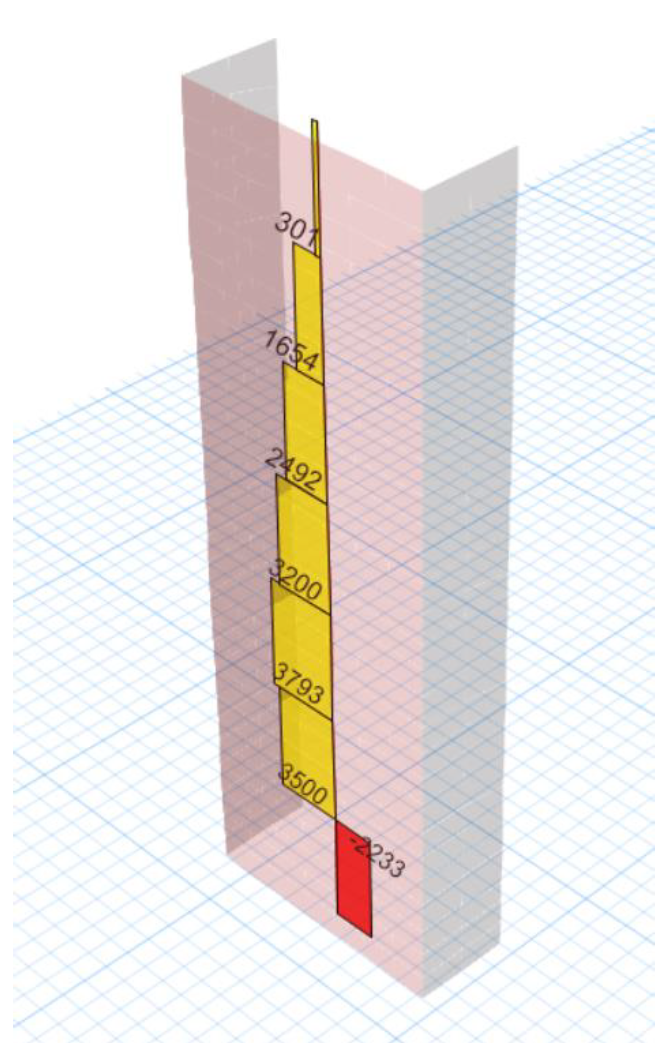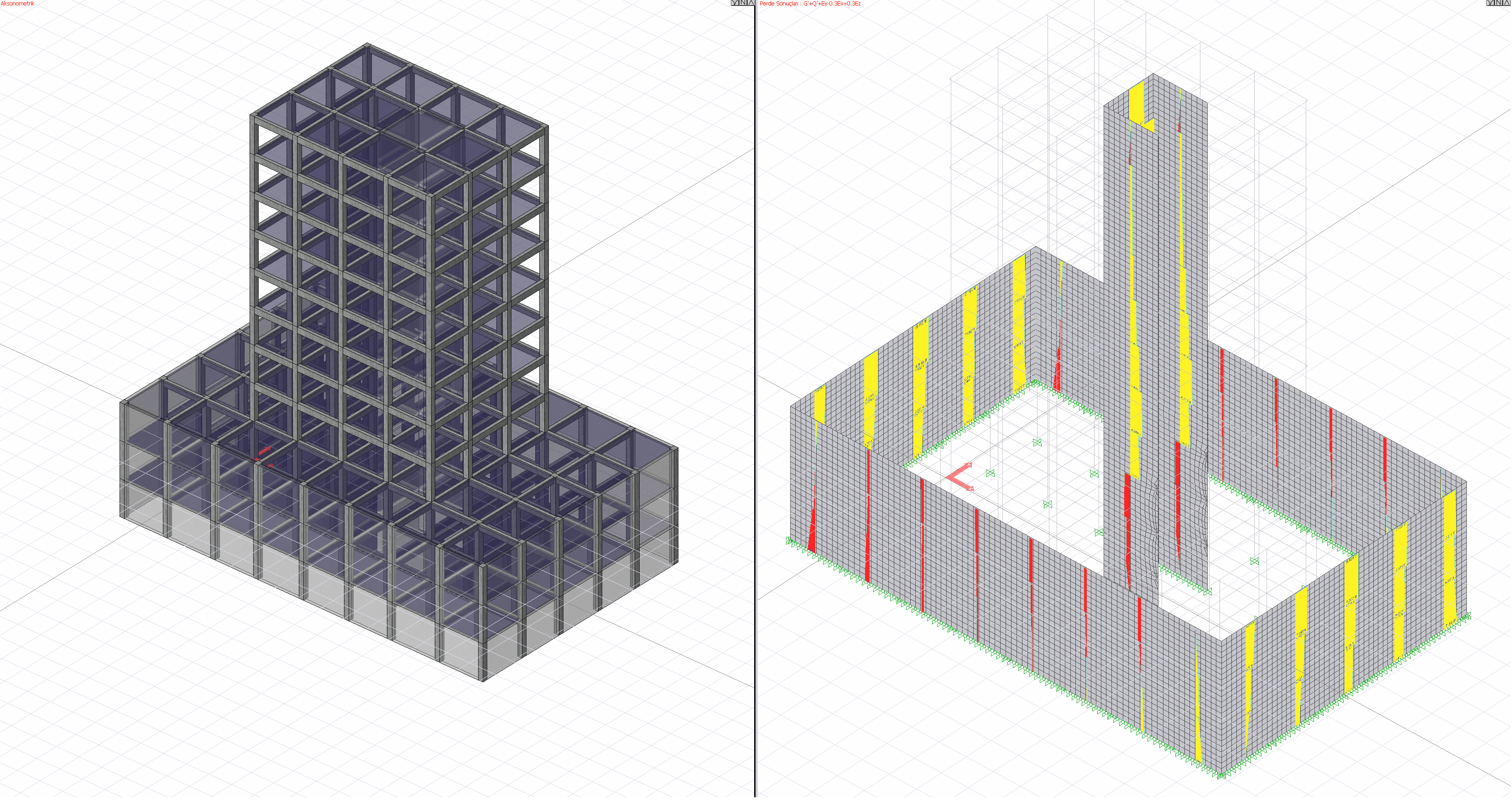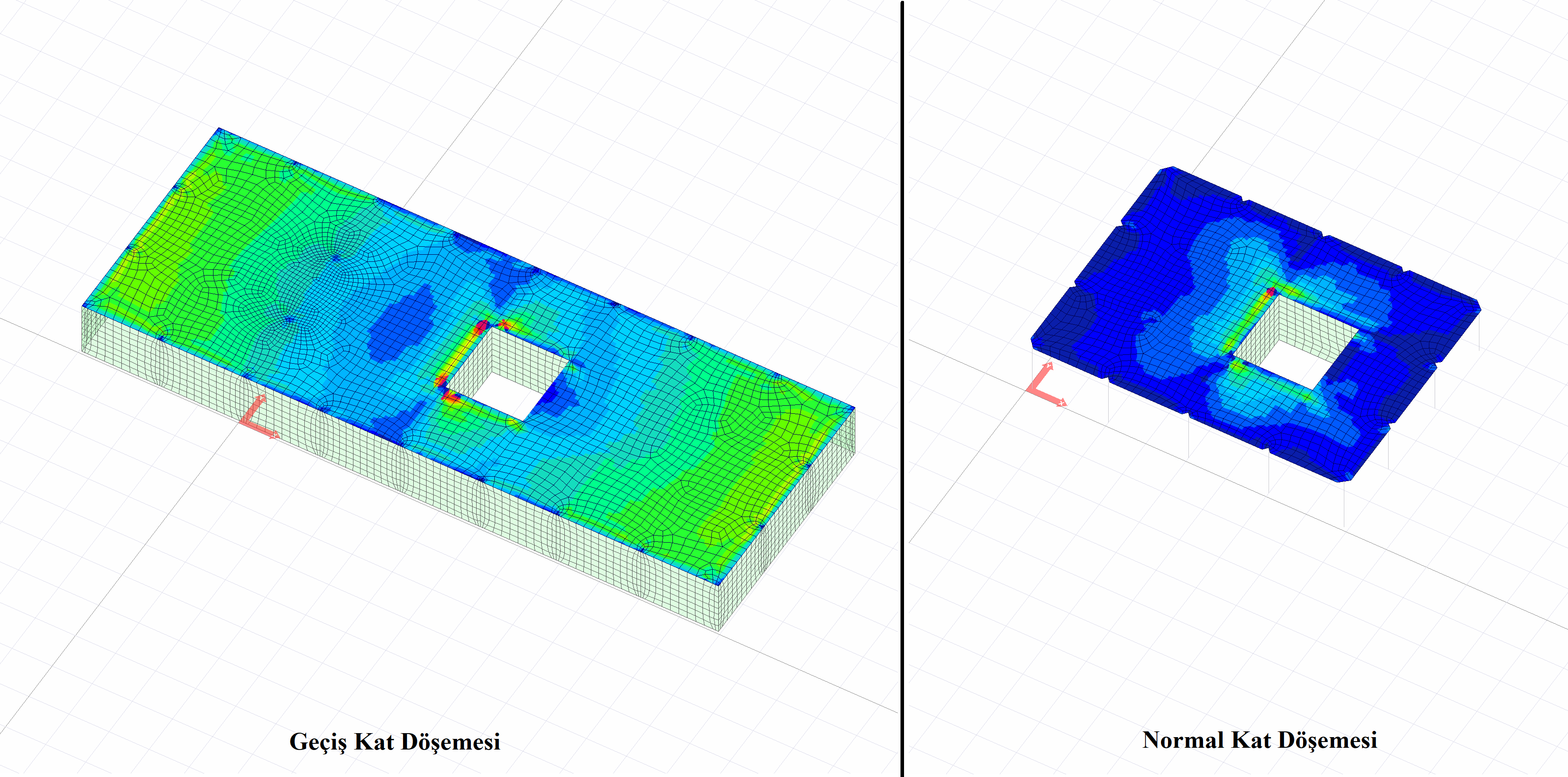Slabs Modelling of Basement Transfer Stories (4.5.7.2)
In the semi-rigid diaphragm solution, two-dimensional shell finite elements (shell) are automatically modeled in the transition stories from normal stories to rigid basement floors.
Regardless of any irregularity control, floors in normal floor and rigid basement floor transitions are modeled with two dimensional shell finite elements (shell) as specified in Article 4.5.7.2 of TBDY .
Buildings whose transition floors contain rigid basement floors appear in buildings with changes in the plan plane area. In terms of horizontal rigidity, the upper part (normal floors) and the lower part (basement floors), which are much more rigid, have very different properties in terms of dynamic behavior and strength. As can be seen in the curtain shear diagram shown below, the shear force changes in the transition layer. The floor in the transition floor must have sufficient rigidity and strength to carry out the load transfer caused by this shear force difference. This situation causes the forces to be transferred to the floor and horizontal load-bearing system to increase. For this reason, all of the structures containing transition layers are solved with semi-rigid diaphragm acceptance.

In the picture below, there is a shear force diagram of a structure with a rigid basement. As can be seen, the shear force has changed direction at the floor level in the transition floor from the normal floors to the rigid basement floor.

The stress distribution occurring in the floors in the transition floor of this structure is also shown below. As can be seen, the stresses increase in the sections where the floors are connected to the curtains. Although the structure does not contain A2-A3 irregularities, the stress values may increase at certain points of the slabs. This situation arises only with the two-dimensional finite element solution.

In the picture below, the transition layer and normal floor slab shell finite element results are compared with the color scale. As can be seen, due to the earthquake effect of normal floor coverings, there was only an increase in stress around the horizontal load-bearing system. However, the stress values in the transition layer are higher than the normal layer stress values. The stresses created by the loads transferred to the horizontal load bearing system in the transition floor floors are also relatively higher than the normal floor.

For the reasons explained above, transition floor floors have to be modeled with semi-rigid diaphragm acceptance. See: Irregularitiy Types A2 and A3 (4.5.6.2) If the floors that should be modeled as semi-rigid diaphragms are made with the acceptance of rigid diaphragms, the increase of in-plane stresses due to the earthquake effect will not be taken into account.
